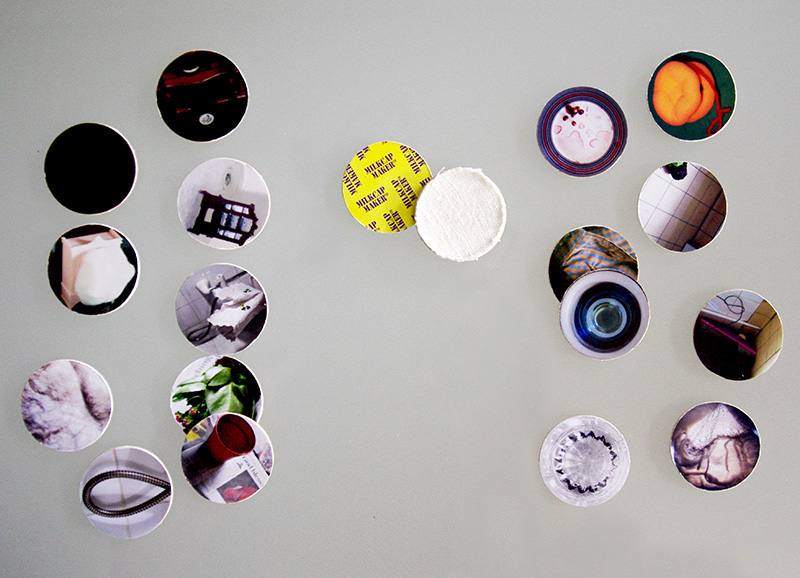For Keeps
(Things I make when I think what things to make)2012-2013
The work for the project, exploring the blurred border between personal and professional in the identity of an artist started at the Faber studios residency in 2012.
Contemporary creative process allows for more thinking and planning than actual producing. Modern technology allowed and the financial recession forced us to abandon the rent on a studio and move our creativity closer to home. It presented us with a schizophrenic lifestyle where professional duties are interrupted by domestic chores. The boundaries of house/work are blurred, as the creative process is often exercised through washing the dishes or sewing a button, proving that while the hands are occupied, the mind can focus. Ideas develop while we fold the laundry, dry the hair, or repot a plant. We have to then drop what we’re doing and run to the computer to type notes. Jobs take much longer to complete, as we are also distracted by arrival of a package from ebay, social media on the laptop, household bills to pay and the dog to walk. Relationships have developed beyond gender roles, as men now work on their careers while changing nappies and women fix the shower while designing a website. IT, accountants, teachers, journalists, regardless of sex and age, - these professionals moved home to work. We play house while we work and we eat on our lap as the dining table has been turned into a desk. Does this affect our work?
Does our work become more intimate since it is made in our bedroom?
The interactive piece consists of a series of photographs, presented in form of a customized children’s game. The game called POG invented in 1920s in Hawaii takes its name from a brand of juice made from passionfruit, orange and guava. The rules require compiling everyone’s disks into a stack face down, and throw a slammer at it. If the pogs turned over at your go – you get to keep them. If not – restack and hand the slammer over to the next person.The use of the POG bottle caps to play the game pre-dated the game's commercialization as at first kids simply drew designs on the white caps and made slammers by gluing three disks together. During the 1990’s, when the game experienced a revival, factory-produced caps carried images of cartoon characters, dragons and popular culture imagery, including photos of actors and figures like Bill Clinton and Tony Blair. They were cheap and sometimes came free with packets of crisps and boxes of cereal. After some time, adults realised the potential of constantly-hand-changing pogs as mini-billboards and placed religious messages, political slogans or banal advertisement on them. Because many children would keep the pogs they won in games from other players, schools considered pogs a form of gambling. Pogs proved to be major distractions from classes and the source of various playground arguments. These reasons eventually led to the banning of pogs from various schools across North America and Europe.
